ISOBUTYRIC ACID N-PROPYL ESTER
Synonym(s):n-Propyl-2-methylpropanoate
- CAS NO.:644-49-5
- Empirical Formula: C7H14O2
- Molecular Weight: 130.18
- MDL number: MFCD00053781
- EINECS: 211-417-4
- SAFETY DATA SHEET (SDS)
- Update Date: 2023-06-08 17:06:37
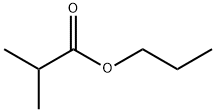
What is ISOBUTYRIC ACID N-PROPYL ESTER?
Chemical properties
Propyl isobutyrate has a pineapple-like odor and a corresponding sweet flavor.
Occurrence
Reported found in several natural products including apple, olive, spineless monkey orange, Gruyere de Comte cheese, honey, hop oil, olives and Roman chamomile oil.
The Uses of ISOBUTYRIC ACID N-PROPYL ESTER
Propyl Isobutyrate finds some use in flavor compositions for imitation Apple, Banana, Gooseberry, Apricot, Mirabelle, Pineapple, Plum, Strawberry, etc. and will constitute about 5 to 25 ppm of the finished product.
Preparation
From propyl alcohol and isobutyric acid in benzene solution in the presence of concentrated H2SO4.
Definition
ChEBI: Propyl 2-methylpropanoate is a carboxylic ester.
Aroma threshold values
Detection: 0.086 to 0.43 ppb
Taste threshold values
Taste characteristics at 5 to 15 ppm: sweet, fruity, with ripe, tropical, tutti-fruiti and citrus melon nuances.
Properties of ISOBUTYRIC ACID N-PROPYL ESTER
| Melting point: | -95.2°C (estimate) |
| Boiling point: | 134 °C(lit.) |
| Density | 0.863 g/mL at 25 °C(lit.) |
| refractive index | n |
| FEMA | 2936 | PROPYL ISOBUTYRATE |
| Flash point: | 80 °F |
| form | clear liquid |
| color | Colorless to Almost colorless |
| Odor | at 100.00 %. sweet ripe fruity tropical melon berry |
| JECFA Number | 187 |
| CAS DataBase Reference | 644-49-5(CAS DataBase Reference) |
| NIST Chemistry Reference | N-Propyl iso-butyrate(644-49-5) |
Safety information for ISOBUTYRIC ACID N-PROPYL ESTER
| Signal word | Warning |
| Pictogram(s) |
 Flame Flammables GHS02 |
| GHS Hazard Statements |
H226:Flammable liquids |
| Precautionary Statement Codes |
P210:Keep away from heat/sparks/open flames/hot surfaces. — No smoking. P233:Keep container tightly closed. P240:Ground/bond container and receiving equipment. P241:Use explosion-proof electrical/ventilating/lighting/…/equipment. P242:Use only non-sparking tools. P243:Take precautionary measures against static discharge. P280:Wear protective gloves/protective clothing/eye protection/face protection. P303+P361+P353:IF ON SKIN (or hair): Remove/Take off Immediately all contaminated clothing. Rinse SKIN with water/shower. P370+P378:In case of fire: Use … for extinction. P403+P235:Store in a well-ventilated place. Keep cool. |
Computed Descriptors for ISOBUTYRIC ACID N-PROPYL ESTER
New Products
4-Fluorophenylacetic acid 4-Methylphenylacetic acid N-Boc-D-alaninol N-BOC-D/L-ALANINOL Tert-butyl bis(2-chloroethyl)carbamate 3-Morpholino-1-(4-nitrophenyl)-5,6-dihydropyridin- 2(1H)-one Furan-2,5-Dicarboxylic Acid Tropic acid S-2-CHLORO PROPIONIC ACID ETHYL ISOCYANOACETATE 2-Bromo-1,3-Bis(Dimethylamino)Trimethinium Hexafluorophosphate (6-METHYL-[1,3]DITHIOLO[4,5-b]QUINOXALIN-2-ONE INDAZOLE-3-CARBOXYLIC ACID 4-IODO BENZOIC ACID (2-Hydroxyphenyl)acetonitrile 4-Bromopyrazole 5,6-Dimethoxyindanone 2-(Cyanocyclohexyl)acetic acid 4-methoxy-3,5-dinitropyridine 2-aminopropyl benzoate hydrochloride 1-(4-(aminomethyl)benzyl)urea hydrochloride diethyl 2-(2-((tertbutoxycarbonyl)amino) ethyl)malonate tert-butyl 4- (ureidomethyl)benzylcarbamate Ethyl-2-chloro((4-methoxyphenyl)hydrazono)acetateRelated products of tetrahydrofuran
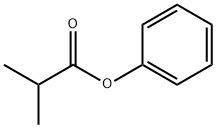
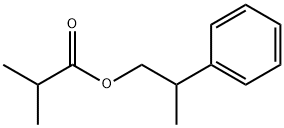
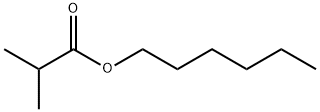
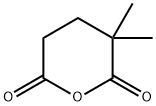
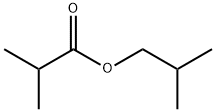
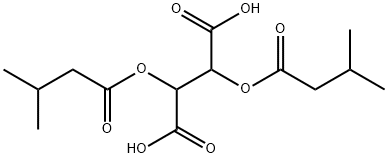
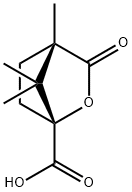
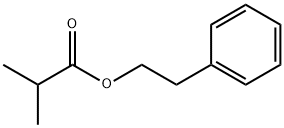
You may like
-
 2033-24-1 98%View Details
2033-24-1 98%View Details
2033-24-1 -
 42831-50-5 5-METHYLISOXAZOLE-4-CARBOXYLIC ACID 98%View Details
42831-50-5 5-METHYLISOXAZOLE-4-CARBOXYLIC ACID 98%View Details
42831-50-5 -
 1975-50-4 98%View Details
1975-50-4 98%View Details
1975-50-4 -
 2-HYDROXY BENZYL ALCOHOL 98%View Details
2-HYDROXY BENZYL ALCOHOL 98%View Details
90-01-7 -
 2-Chloro-1,3-Bis(Dimethylamino)Trimethinium Hexafluorophosphate 221615-75-4 98%View Details
2-Chloro-1,3-Bis(Dimethylamino)Trimethinium Hexafluorophosphate 221615-75-4 98%View Details
221615-75-4 -
 61397-56-6 CIS BROMO BENZOATE 98%View Details
61397-56-6 CIS BROMO BENZOATE 98%View Details
61397-56-6 -
 14714-50-2 (2-Hydroxyphenyl)acetonitrile 98+View Details
14714-50-2 (2-Hydroxyphenyl)acetonitrile 98+View Details
14714-50-2 -
 118753-70-1 98+View Details
118753-70-1 98+View Details
118753-70-1